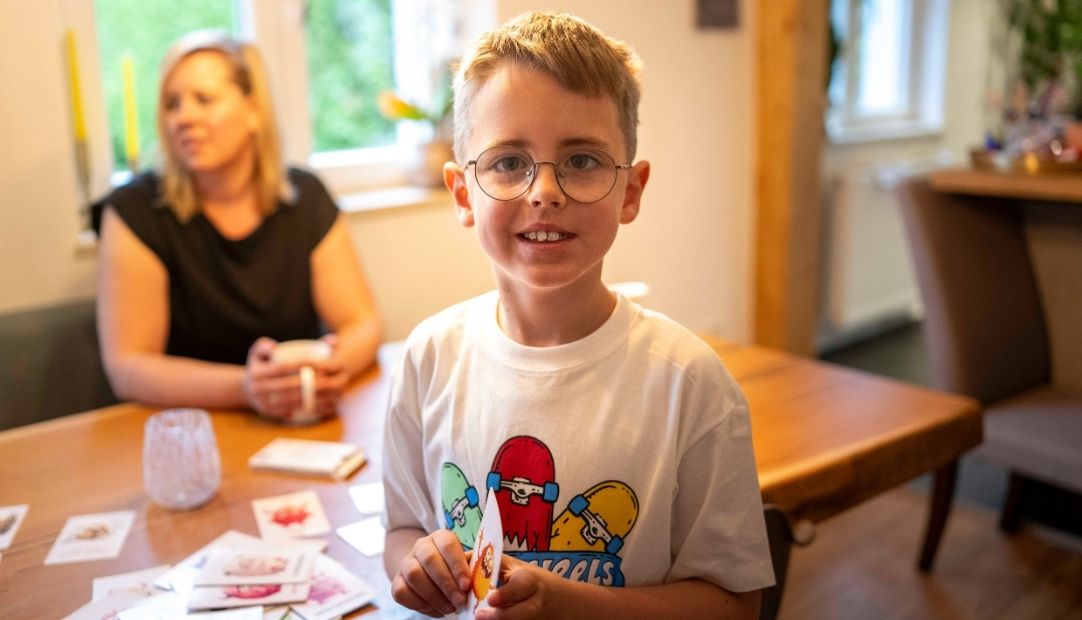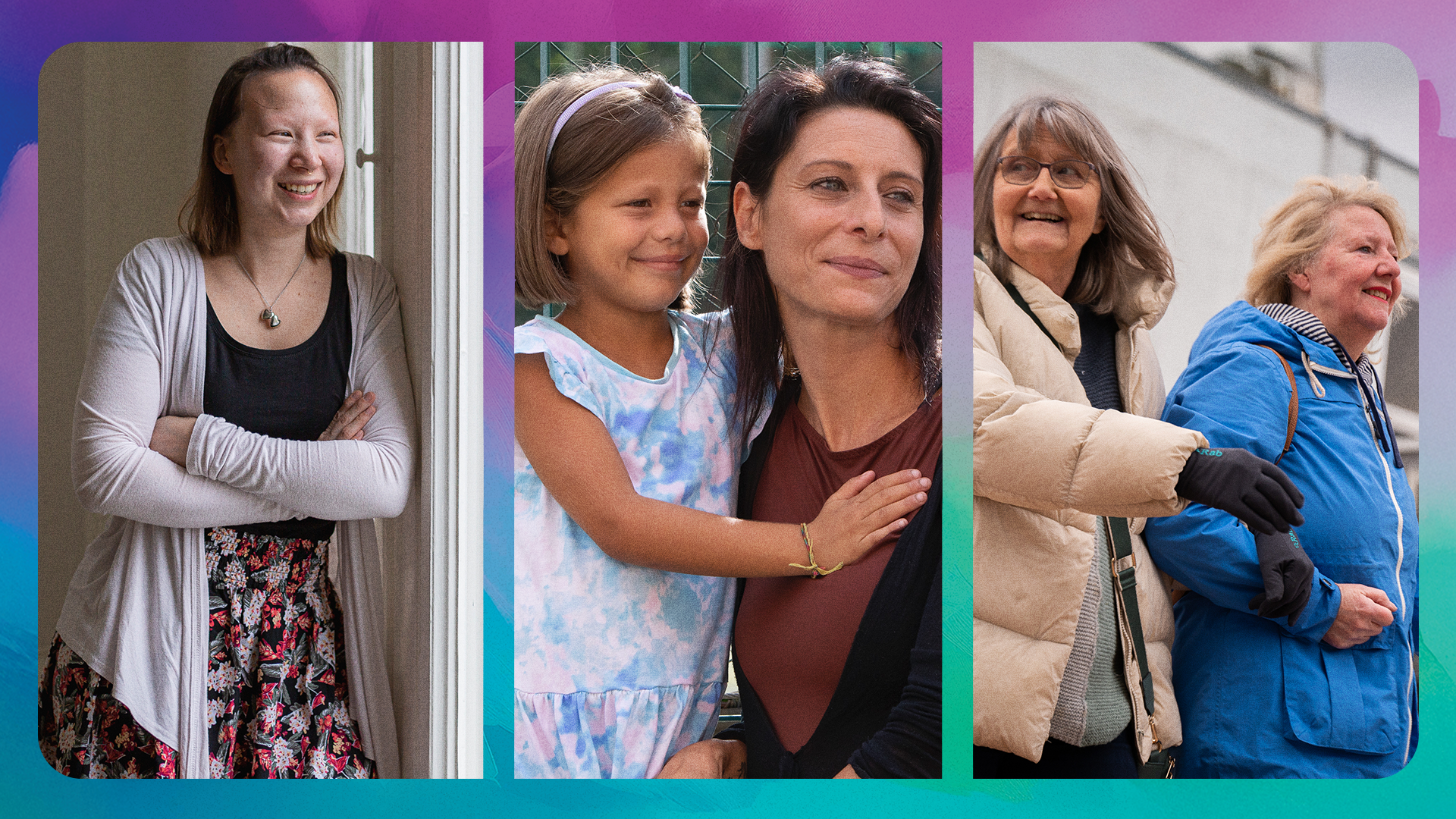Understanding the true impact of living with FOP

This year marks the 17th anniversary since the discovery of the ACVR1 gene was announced, a major scientific milestone in fibrodysplasia ossificans progressiva (FOP) research that helped us understand what causes the condition. On April 23, we marked FOP Awareness Day to honor this important anniversary, raise awareness of this ultra-rare genetic condition, and celebrate the strength of the FOP community, who face challenges every single day that most of us would find unimaginable. At Ipsen, we recognize the importance of advocating for the unique and complex needs of people living with FOP and although FOP Awareness Day is one very important day, we will never lose sight of the fact that the FOP community deserves our ongoing and long-term commitment every day. In order to succeed in addressing the significant unmet needs that exist, working together with the FOP community is of paramount importance.
We believe it is our responsibility to listen to the first-hand experiences of the FOP community in order to drive positive change. One way we can do this is through studies that truly put those living with FOP at the center of our research, such as burden of illness surveys and natural history studies, which are vital tools to expand our knowledge in rare diseases. Research like this allows us to design clinical trials that explore those aspects of a disease that are the most impactful and relevant to patients, such as disease progression, physical, social, emotional, and quality of life outcomes.
It would be impossible for most of us to understand what someone living with an ultra-rare, chronic, painful and progressive condition like FOP is going through.1,2 What we do know, however, is that FOP causes ongoing, irreversible bone growth in soft tissues outside of the normal skeletal system, which is known as heterotopic ossification (HO).3 This new bone growth leads to joints becoming immobile, causing progressive loss of movement – many people with FOP need to use a wheelchair by 30 years of age.2,4 Extra bone growth associated with FOP can also cause the jaw to lock, creating difficulty eating and speaking. Additionally, restrictions in the chest can lead to cardiorespiratory failure and ultimately lead to many people living with FOP to have a reduced life expectancy.5
The closest we can get to understanding the realities of living with a rare disease like FOP, is by actively listening to patients about the true impact that it has across every aspect of their lives. By ensuring the patient voice is embedded throughout the end-to-end process of clinical development, including dissemination of findings, the resulting research can be used to bring meaningful change.
Refining rare disease research
Research in rare and ultra-rare diseases brings challenges that are different to those in other disease areas – these include very small patient populations that make it difficult to find individuals who are willing and able to participate in research,6 lack of wide-spread disease specific knowledge6 and expertise to build upon,4,7 clinical trial complexity with a lack of known and agreed upon endpoints,6 high research and development costs8 with a notable failure rate,9 and non-existent effective frameworks for assessing value.6
To try to break down some of these barriers and better understand the day-to-day realities for people living with FOP, their family members and caregivers, as well as the healthcare professionals (HCPs) who support them, we designed two complementary projects: a prospective, natural history study and a burden of illness survey. Both studies were created in partnership with the FOP community – who not only helped to design them, but who continue to be pivotal as we work to understand and disemminate the insights.
Firstly, the Natural History Study — a first-of-its-kind in FOP. Previously, there was limited research in this area, so the study was designed to more comprehensively describe the natural disease progression and was the first time a global, prospective, longitudinal evaluation of FOP has been carried out, with data collected over a period of 36 months. Findings demonstrated the debilitating impact and progressive nature of FOP, and key insights include:
- The greatest accumulation of new HO occurs during childhood and early adulthood.10
- The use of aids, assistive devices, and adaptations (AADAs) increased substantially, with more than 90% using at least one new AADA during the study, suggesting the use of AADA could be a real-world indicator of decreased mobility in FOP.10
As a complement to this, we also partnered with FOP community advisors to carry out the first international FOP Burden of Illness (Bol) survey to capture the multifaceted impact of FOP, including the effect on families and caregivers. The Bol survey revealed the extent of the social, economic and quality of life impact of FOP, with findings demonstrating:
- Progressive loss of joint mobility and function is associated with a considerable, negative impact on quality of life for those living with FOP.10
- As disability increases over time, the way in which FOP is managed changes, with a greater focus on daily care and support, an increased reliance on assistance from family members for performing daily activities, and limitations in mobility restricting the ability to travel.11
- Individuals with the most severe physical limitations reported quality of life scores substantially worse than those generally reported by people living with diabetes mellitus, cancer, and multiple sclerosis. Results also suggest loss of joint function leads to a negative financial impact due to rising costs as the need for living adaptations, likelihood of changes to career plans, and missed days of work for these individuals and their families increase.11
Driven by the voices of FOP
At Ipsen, our teams are working everyday to support those in the rare disease community. But the only way we can truly begin to comprehend what life is like for someone living with a rare disease, is by asking them. The Natural History Study and the Bol survey were important tools that allowed us to ask questions and listen to the community, to try to understand their experiences. We would like to personally thank the FOP community who helped make these studies impactful and who have provided opportunities for better understanding and the sharing of these powerful insights.
Only through true understanding can we continue to make the right decisions to support the FOP and rare disease communities.
References
1. Baujat, G et al., 2017, Prevalence of fibrodysplasia ossificans progressiva (FOP) in France: an estimate based on a record linkage of two national databases, Orphanet Journal of Rare Diseases, vol.12, no.1, pp.1-9.
2. Connor JM, Evans DA. Fibrodysplasia ossificans progressiva. The clinical features and natural history of 34 patients. J Bone Joint Surg Br. 1982;64(1):76-83.
3. Kaplan FS, et al. 1993, The Histopathology of Fibrodysplasia Ossificans Progressiva. J Bone Joint Surg Am, Vol 75, no. 2, pp. 220-30.
4. Pignolo, R. et al., 2020. Self-reported baseline phenotypes from the International Fibrodysplasia Ossificans Progressiva (FOP) Association Global Registry. Bone, 134, p.115274.
5. Kaplan FS, Zasloff MA, Kitterman JA, et al. Early mortality and cardiorespiratory failure in patients with fibrodysplasia ossificans progressiva. J Bone Joint Surg Am. 2010;92(3):686–691.
6. Neez E, Gentilini A, Hutchings A. 2021. Addressing unmet needs in extremely rare and paediatric-onset diseases: how the biopharmaceutical innovation model can help identify current issues and find potential solutions. EFPIA, viewed 28 September 2022, https://dolon.com/rare-knowledge/publications/addressing-unmet-needs-in-extremely-rare-and-paediatric-onset-diseases.
7. Qi, Z., Luan, J., Zhou, X., Cui, Y., & Han, J. 2017. Fibrodysplasia ossificans progressiva: Basic understanding and experimental models. Intractable & rare diseases research, 6(4), 242–248. https://doi.org/10.5582/irdr.2017.01055.
8. Jayasundara K, et al 2019, ‘Estimating the clinical cost of drug development for orphan versus non-orphan drugs.’, Orphanet Journal of Rare Diseases, Vol.14, no. 12.
9. Wong CM, et al 2019, ‘Estimation of clinical trial success rates and related parameters’ Biostatistics, Vol. 20, no. 2, pp. 273–286.
10. Pignolo et al. The Natural History of Fibrodysplasia Ossificans Progressiva: A Prospective, Global, 36-Month Study. Genetics in Medicine. 2022. https://doi.org/10.1016/j.gim.2022.08.013.
11. Mukaddam MA. et al. 2022. The impact of fibrodysplasia ossificans progressive (FOP) on patients and their family members: results from an international burden of illness survey, Expert Review of Pharmacoeconomics & Outcomes Research. DOI: 10.1080/14737167.2022.2115360.










